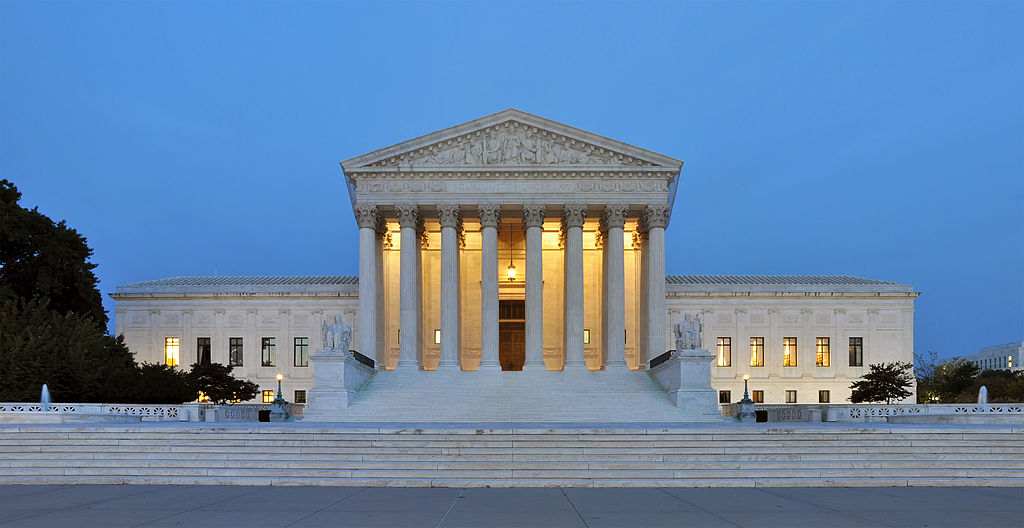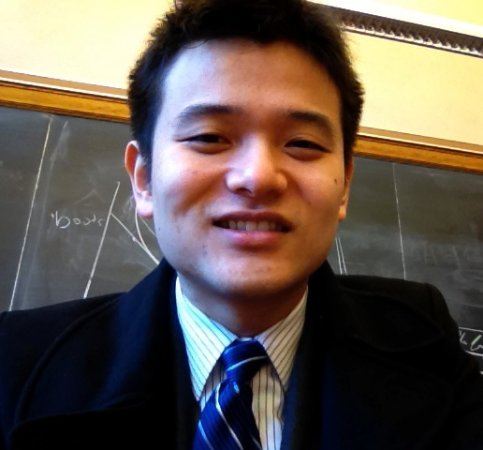The Supreme Court Rules in Jam v. International Finance Corporation
On Feb. 27, the Supreme Court issued a 7-1 opinion in Jam v. International Financial Corporation, deciding that international organizations have the same level of immunity from lawsuits granted to foreign governments.

Published by The Lawfare Institute
in Cooperation With

On Feb. 27, the Supreme Court issued a 7-1 opinion in Jam v. International Financial Corporation, deciding that international organizations have the same level of immunity from lawsuits granted to foreign governments. Writing for the majority, Chief Justice John Roberts interpreted the International Organizations Immunity Act (IOIA) as establishing a continuous link between international organization immunity and foreign sovereign immunity, as defined by the Foreign Sovereign Immunities Act (FSIA). The decision exposes international organizations to potential liability if their actions fall within one of the exceptions to the FSIA, including the exception for “commercial activities.” Justice Brett Kavanaugh did not participate in the case, presumably because he was involved while it was before the U.S. Court of Appeals for the D.C. Circuit prior to his confirmation to the Supreme Court.
Statutory Background, Facts and Procedural History
In 1945, Congress passed the IOIA to grant international organizations certain privileges and immunities, such as exemption from property taxes and immunity from lawsuits and searches. Section 2 of the IOIA defines the scope of international organizations’ immunity from lawsuits:
International organizations, their property and their assets, wherever located, and by whomsoever held, shall enjoy the same immunity from suit and every form of judicial process as is enjoyed by foreign governments, except to the extent that such organizations may expressly waive their immunity for the purpose of any proceedings or by the terms of any contract.
The IOIA also authorizes the president “to withhold or withdraw from any [international] organization or its officers or employees, any of the privileges, exemptions, or immunities” that the IOIA grants.
When the IOIA was enacted in 1945, foreign sovereigns enjoyed virtually absolute immunity. The U.S. government, however, subsequently narrowed its view of the sovereign immunity to which foreign states are entitled, most notably through the development of the “commercial activities exception” doctrine. According to this doctrine, foreign governments are denied immunity when they engage in conduct based on commercial activity carried out in the United States. The commercial activities exception is one of several exceptions to sovereign immunity that were later codified in the FSIA).
Respondent International Financial Corporation (IFC) is an international organization based in Washington, D.C. A member organization of the World Bank Group, the IFC focuses on funding private-sector projects in developing countries. One such IFC-financed project is the Tata Mundra power plant in Gujarat, India. As part of a $450 million loan to finance the power plant, the IFC required the company overseeing the project to adhere to an environmental action plan to protect the surrounding areas. The IFC retained the ability to revoke its financial support if the company failed to comply with the agreement.
The petitioners are farmers and fishermen living near that power plant. In 2015, they sued the IFC for damages and injunctive relief in federal district court in Washington, D.C. They claimed that the IFC’s failure to comply with its internal policies and enforce the environmental action plan resulted in the contamination of drinkable groundwater, degradation of local air quality, and displacement of local fishermen and farmers.
As part of its defense, the IFC asserted that it had absolute immunity from lawsuits under the IOIA. Thus, the district court had to grapple with an issue of statutory interpretation: Under the IOIA, do international organizations “enjoy the same immunity from suit” as enjoyed by foreign governments when the IOIA was first enacted? Or as enjoyed by foreign governments in the present day, after enactment of the FSIA?
In the district court, Judge John D. Bates found that international organizations are entitled to the 1945-level of immunity, which was “virtually absolute” The U.S. Court of Appeals for the D.C. Circuit affirmed the district court’s decision, pursuant to its 1998 holding in Atkinson v. Inter-American Development Bank. Further details of the D.C. Circuit’s decision can be found in Lawfare’s earlier coverage of this case.
Majority Opinion
Chief Justice Roberts wrote the majority opinion. He began his analysis by examining the plain language of the statute, noting that the IOIA used the phrase “same immunity from suit … as is enjoyed by foreign governments” instead of setting a fixed level of immunity, absolute or otherwise. He further points out that the next subsection of the statute used clearly static language to define the scope of other immunities for international organizations, suggesting that the contours of immunity from lawsuits were meant to be dynamic.
Roberts then addresses the IFC’s argument that the IOIA should not be read as incorporating the developments in foreign sovereign immunity because the two types of immunity have different purposes. According to the IFC, foreign governments were granted immunity based on principles of comity and reciprocity, while international organizations were given immunity so that they could carry out their functions without undue interference. Yet the majority dismisses employing a purpose-oriented approach when it would contradict the “ordinary meaning of the words used.” In the majority’s reading, Congress framed the immunity provision “in language Congress typically uses to make one thing continuously equivalent to another.” Roberts underscores that other statutes using this “same as” construction create a continuous equivalence or relationship between the referencing statute and the referred statute.
To bolster his argument, Roberts invokes the “reference canon” of statutory interpretation, which distinguishes statutory references to general subjects from references to a specific title or section number of another statute. According to this canon, a specific reference to another statute “in effect cuts and pastes the referenced statute as it existed when the referring statute was enacted, without any subsequent amendments.” A statute that instead refers to a general subject matter “adopts the law on that subject as it existed whenever a question under the statute arises.” The majority opinion finds that the IOIA falls under the latter category since it refers to “an external body of potentially evolving law—the law of foreign sovereign immunity—not to a specific provision of another statute.” Accordingly, the IOIA “link[s] the law of international organization immunity to the law of foreign sovereign immunity, so that the one develops in tandem with the other.”
The court also rejects the IFC’s argument that the phrase “immunity enjoyed by foreign governments” had a well-settled, common law meaning in 1945—namely, virtually absolute immunity. The IFC contended that the interpreting courts should abide by the presumption that the IOIA’s drafters intended to incorporate the well-settled meaning of a common law term. However, Roberts explains that this phrase is not a term of art that has substantive meaning, such as “fraud” or “forgery.” Instead, the phrase is “an instruction to look up the applicable rules” on the scope and content of foreign sovereign immunity, “wherever those rules may be found—the common law, the law of nations or a statute.”
The majority opinion then explains that the D.C. Circuit mistakenly relied upon its prior decision in Atkinson. Roberts raises two critiques, echoing Judge Cornelia Pillard’s concurrence in the D.C. Circuit opinion, in which she urged her colleagues to reconsider Atkinson. First, the court in Atkinson unnecessarily found an inconsistency between a dynamic incorporation of foreign sovereign immunity doctrine and a provision in the IOIA authorizing the president to withhold, withdraw, condition, or limit the otherwise applicable privileges and immunities of an international organization “in the light of the functions performed by any such international organization.” Roberts explains that the two ideas can be reconciled, as the law of foreign sovereign immunity sets the baseline of immunity for international organizations while the IOIA authorizes the president to reduce this level of immunity for particular organizations as warranted by their function.
Roberts further criticizes Atkinson for giving “no consideration to the opinion of the State Department,” which he maintains deserves “special attention” in this area. He notes that the State Department has consistently maintained the position that the immunity rules of FSIA and IOIA are linked for decades.
The final section of the majority opinion addresses the IFC’s argument that the dynamic incorporation of foreign sovereign immunity into the IOIA would lead to a flood of foreign-plaintiff litigation in U.S. courts. According to the IFC, these suits would raise some of the same foreign relations concerns that the Supreme Court found problematic in recent cases involving litigation pursuant to the Alien Tort Statute.
Roberts dismisses these “inflated” concerns. He explains that the IOIA only sets the default rules, which international organizations can depart from by insisting on more generous terms as conditions of membership in their charters. In a nod to the merits of the case, Roberts cautions that it should not be assumed that “the lending activity of development banks qualifies as commercial activity within the meaning of the FSIA,” a position suggested by the U.S. government during oral argument. Finally, the chief justice highlights that the FSIA imposes other conditions on the application of the commercial activity exception, including a sufficient nexus to the United States and that the claim be “based upon” the commercial activity or related acts. A lawsuit centered on tortious overseas activity, he concludes, would thus not be considered to be “based on” commercial activity in the United States.
Justice Breyer’s Dissent
The sole dissenting member of the court, Justice Stephen Breyer, filed an opinion that employs “purpose-based methods of interpretation” in order to “shine a useful light upon opaque statutory language” in the IOIA. Drawing on the “statute’s history, its context, its purposes, and its consequences,” he concludes that international organizations retain the level of immunity that foreign governments possessed when Congress enacted the statute in 1945. Breyer methodically recounts the IOIA’s history and context to demonstrate that “purpose, not linguistics” better answers the question of whether Congress intended to incorporate a static or a dynamic definition of foreign sovereign immunity into the IOIA. Accordingly, he would affirm the dismissal of the lawsuit against the IFC.
In the final part of his opinion, Breyer focuses on the potential negative consequences of extending the commercial activities exception to international organizations. He predicts that “many of the international organizations to which the United State belongs will discover that they are now exposed to civil lawsuits based on their (U.S.-law-defined) commercial activity.” Breyer finds that these concerns are especially acute for “organizations involved in finance, such as the World Bank, the Inter-American Development Bank and the Multilateral Investment Guarantee Agency.”
The dissent also warns that the majority opinion may abrogate a line of cases that have interpreted voluntary waivers of immunity by international organizations in a manner that protects their core objectives. In Breyer’s view, the majority opinion “exposes [international] organizations to potential liability in all cases arising from their commercial activities, without regard to the scope of their waivers.”
A final consequence put forward by Breyer is that the majority opinion will upset an intricate scheme set up by Congress to balance immunity with liability. He explains that many international organizations either set up an arbitration system or enacted limited waivers of immunity to reflect “their moral (if not legal) obligations to prevent harm to others and to compensate individuals when they do cause harm”—all while maintaining their ability to operate effectively in the United States. When these alternatives are inadequate, the president has the flexibility to adjust the immunity of a specific international organization, pursuant to the control that the president wielded over sovereign immunity when the IOIA was adopted in 1945. According to Breyer, the majority opinion removes the president’s “power to tailor immunity,” including by restoring it if a lawsuit poses a serious threat to an international organization. As he states, “Nothing in the present statute gives the Executive, the courts, or the organization the power to restore immunity, or to tailor any resulting potential liability, where a lawsuit threatens seriously to interfere with an organization’s legitimate needs and goals.”
Breyer then closes with a soliloquy on the relative merits of purposivist versus textual statutory analysis, stating:
My decision rests primarily not upon linguistic analysis, but upon basic statutory purposes. Linguistic methods alone, however artfully employed, too often can be used to justify opposite conclusions. Purposes, derived from context, informed by history, and tested by recognition of related consequences, will more often lead us to legally sound, workable interpretations—as they have consistently done in the past. These methods of interpretation can help voters hold officials accountable for their decisions and permit citizens of our diverse democracy to live together productively and in peace—basic objectives in America of the rule of law itself.
Conclusion/Outcome
On remand, the district court will have a chance to address the key question on the merits: Do the activities of the IFC fall within the commercial activities exception as defined in the FSIA? A decision holding that these lending activities do qualify as commercial activities could open a key avenue of redress for third parties who have been harmed by projects funded by international organizations, and have a direct impact on other pending litigation against international organizations. However, as Chief Justice Roberts alludes in his opinion, the lending activities of the IFC (and similar international organizations) may have a difficult time qualifying for that exception.




.jpg?sfvrsn=8253205e_5)
